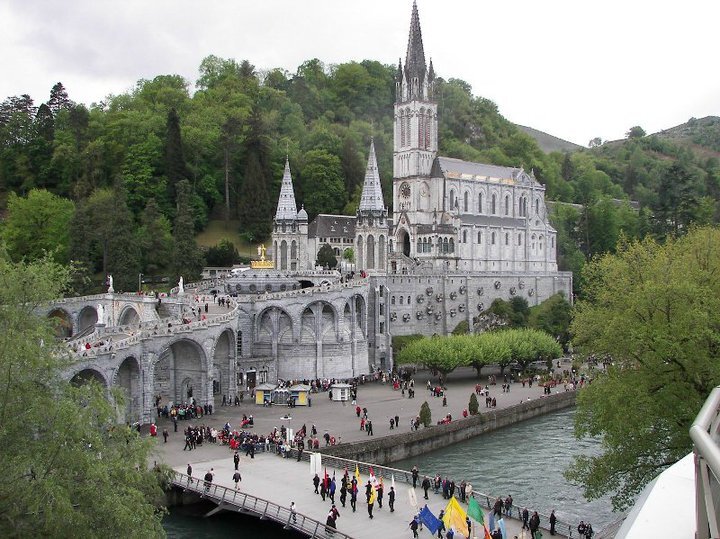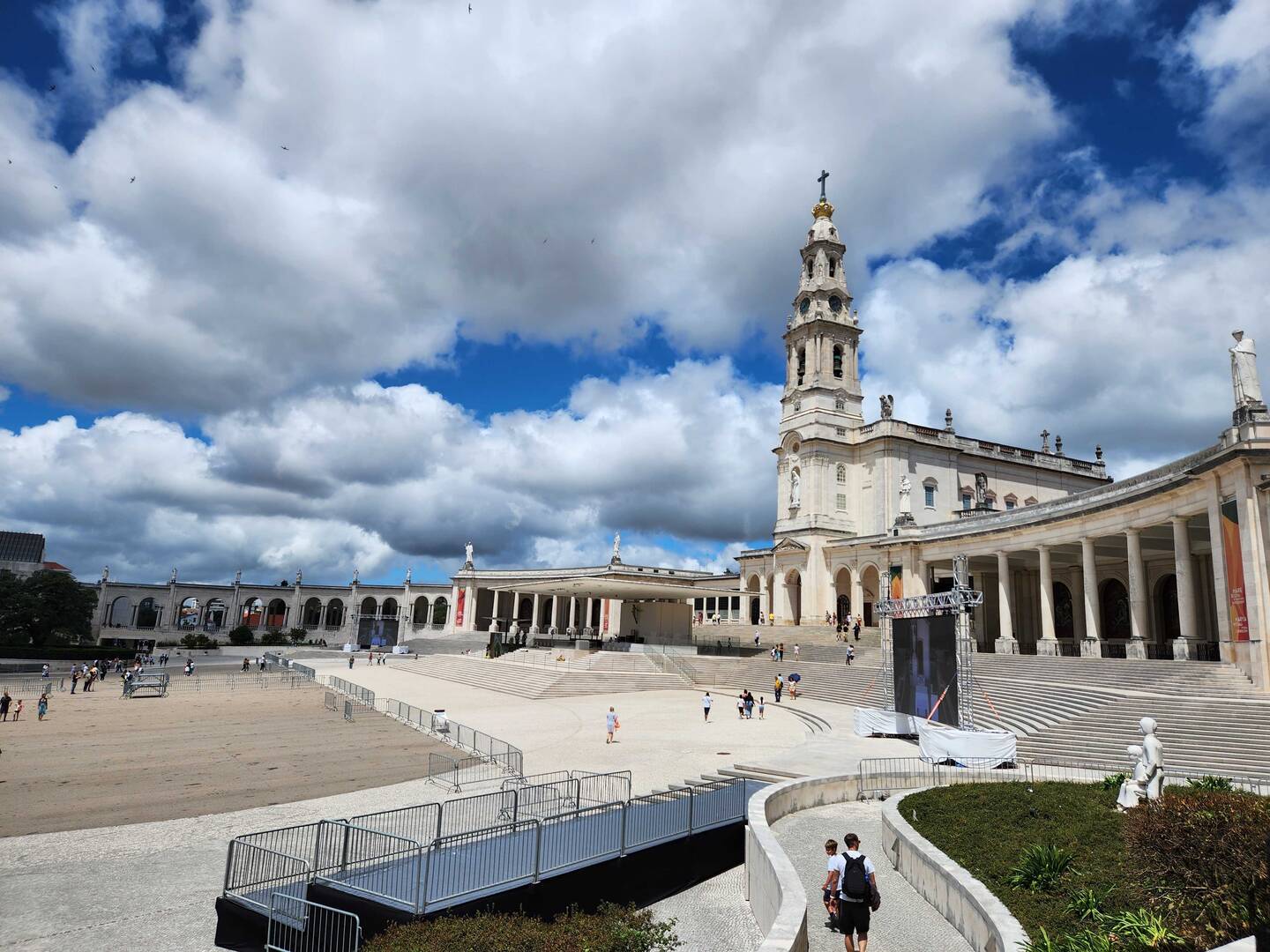Next week, the Vatican is set to publish a new set of guidelines on apparitions, including Marian apparitions, that is, reports from individuals or groups that the Virgin Mary has appeared to them. There are many kinds of apparitions and visions, but Marian ones predominate in the Catholic Church.
The last major Vatican document addressing the topic is the “Directory on Popular Piety and the Liturgy,” issued in 2001. It quotes a line from the Catechism of the Catholic Church, which sums up the church’s stance with admirable clarity: “Throughout the ages, there have been so-called private revelations, some of which have been recognized by the authority of the Church. They do not belong, however, to the deposit of faith” (No. 67).
In other words, you do not have to believe in Marian apparitions to be a good Catholic.
But I do. I’ve never had a problem believing in them. My general approach is: If God could create the universe ex nihilo and raise his Son from the dead, then having Mary appear from time to time, and even being the occasion for some miracles, seems easy by comparison. That statement may sound flip. But it is entirely serious. It is surely within God’s power to enable these things to happen. So, I am always amazed when people say, “God wouldn’t possibly do that.” Oh, really?
I also say this as someone who has visited three major Marian shrines, which have deeply moved me: Lourdes, Fátima and Knock. The stories of the visionaries and what I experienced in those places go a long way to convince me of the veracity of the apparitions. There is also a striking sameness among most Marian apparitions (at least these three) that reminds me of the sameness that one finds as a spiritual director who listens for God’s voice. As St. Ignatius Loyola says in his Spiritual Exercises, there is a certain quality to God’s voice that one can recognize. Likewise in these apparitions.
Three stories
I know Lourdes best, having been there several times on pilgrimages with the Order of Malta over the years. Perhaps you already know the story. In 1858, in a small village in southern France, the Blessed Mother appeared several times near the Gave de Pau river in a grotto (which sounds charming until you learn that the spot was used as the town’s garbage dump) to a poor girl named Bernadette Soubirous, age 14. Though initially greeted with doubt and derision, she stuck to what seemed an outlandish story. Eventually “the lady” revealed herself, speaking to Bernadette not in French but the local patois, by saying, “I am the Immaculate Conception.” Bernadette’s story is told to great effect and very accurately in the book and film The Song of Bernadette.

What astounds the reader almost as much as the appearances of Mary and the subsequent miraculous healings, which came from the sick bathing in a spring that Bernadette uncovered near the river, is the remarkable character of Bernadette. She is honest, simple and plain-spoken. Despite the Soubirous family’s extreme poverty—they lived in a former jail—she assiduously refused money or emoluments from people who wanted her prayers or simply to help her family. She even more assiduously refused to be puffed up. When a photographer asked her to recreate her expression when Mary appeared to her, she said, tartly, “She’s not here.” Bernadette even objected to the statue that was later placed in the niche in the grotto. Mary was a demoiselle, a young girl her own age, Bernadette said, not a mature woman.
The same flintiness can be found among the visionaries in the story of Our Lady of Fátima, where Mary appeared in 1917, again in a small, poor town, this time in Portugal, and again to poor, young children: Francisco, Jacinta and Lucia, ages 10, 9 and 7. As in the case of St. Bernadette, the three children were initially greeted with suspicion but, again, stuck to their story of the woman appearing above an oak tree, naming herself as “Our Lady of the Rosary.” Mary famously confided several secrets to the children—and revealed to them a vision of hell. Sts. Jacinta and Francisco would end up dying very young; Lucia (like Bernadette) entered a religious order and then lived to an old age, never withdrawing any aspect of her story. As an added “proof,” thousands of people witnessed the sun “spinning” in the sky, an event foretold in a vision and documented by photographers and news reporters of the time.
Finally, in the again poor Irish town of Knock, Mary appeared in an unusual way in 1879—along with St. Joseph, St. John the Evangelist and a lamb atop an altar, surrounded by angels, before the back wall of the local parish church. In the pouring rain, a group of roughly 20 people, ranging from young to old, witnessed the apparition. In this case, however, Mary said nothing. At Knock, one of the visionaries tried to grab onto the vision only to have his hands pass through it. “I saw everything distinctly,” Patrick Hill, age 11, said. “The figures were full and round as if they had a body and were alive.”

Striking similarities
It’s easy to see some striking similarities, betokening a certain “quality” about the apparitions. First and most obviously, Mary appears to people who are poor.
Second, she often appears to young people. And why wouldn’t she? An angel appeared to Mary when she was a girl in the small village of Nazareth and told her something extraordinary. It makes sense that so many of these apparitions happen to young people in similarly poor settings. The testimony of these individuals, who all seem honest and forthright and stuck with their stories even in the face of adult remonstrances, is enough proof for me.
Third, in each case the message is simple and similar: Pray, do penance, make pilgrimages. In Knock the message is even simpler: Just look! See, I am here.
Fourth, each apparition includes an aspect that still confuses people today, as if the message cannot be fully understood. To me, this lends them further veracity. If the visionaries were going to lie, why make up things that are hard for people to grasp or that might make it less likely that they would accept their stories? In Lourdes, people often ask: Why did Mary appear only to Bernadette when others around her saw nothing? How was Bernadette able to wade through the icy Gave river and say it felt like bathwater? In Fátima, why would Mary show young children such terrible visions of hell? In Knock, why did Mary say nothing to anyone?

Now, I would say that the fifth quality is that each apparition has given rise to pilgrimages of faith, but that would be a tautology: proving something by virtue of people believing it’s true. So, I’ll just say, fifth: I have felt an almost physical sense of the holy when I have been to these shrines. When I approached the Grotto of Lourdes, the great oak tree at Fátima and the Chapel of the Apparitions at Knock, I felt a deep sense of peace. I thought: Something happened here.
Authenticity
Not every Marian apparition is “authentic.” Those with long memories may remember Our Lady of Bayside, who allegedly appeared to Veronica Luekens in Queens, N.Y., beginning in 1970, to pass along messages that reportedly included telling women not to wear lipstick or pantsuits.
As a Jesuit novice, I met a former Catholic sister working as a pastoral care worker at a local hospital whose mother was obsessed with Our Lady of Bayside. Concerned, my friend spoke to her local pastor, who encouraged her to write to the Vatican. Amazingly, my friend received the briefest of letters from Pope Paul VI, who said, in essence, Mary would never come to earth to say so many negative and silly things.
Of course, as the new Vatican document will probably say, it is up to not only the sensus fidelium (the sense of the faithful) but the church to determine which apparitions are authentic. Much as in the canonization process, this involves interviews and investigations of the visionaries, examinations of any miracles and a consideration of the effects on the areas where Mary is supposed to have appeared—increased piety and devotion, for example. These processes are essential to guard against fraud and deception. (Our Lady of Bayside, for example, was eventually rejected by the local church authorities.)
Marian apparitions are not everyone’s cup of tea. The first time I returned from Lourdes, I told an older Jesuit that I had been privy to a minor miracle. One of the most rational, hard-headed and skeptical members in our pilgrimage—who resisted coming with his much more devout partner—heard a voice clearly saying, “I forgive you.” When I recounted my story, the Jesuit rolled his eyes and said, “Yeah, it doesn’t do it for me.” For me, it does.







